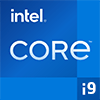
Apple M1 Benchmark, Test and specs
Last updated:
The Apple M1 has 8 CPU cores and can process 8 threads at the same time. The processor was presented in Q4/2020 and is based on the 1. Generation of the Apple M series series. In the Geekbench 5 benchmark, the Apple M1 achieved a result of 1,742 points (single-core) or 7,650 points (multi-core).

| Name: | Apple M1 |
|---|---|
| Family: | Apple M series (23) |
| CPU group: | Apple M1 (9) |
| Architecture: | M1 |
| Segment: | Mobile |
| Generation: | 1 |
| Predecessor: | -- |
| Successor: | Apple M2 |
CPU Cores and Base Frequency
The Apple M1 has 8 cores. The clock frequency of the Apple M1 is 0.60 GHz (3.20 GHz). An initial performance assessment can be made using the number of CPU cores.
| CPU Cores / Threads: | 8 / 8 |
|---|---|
| Core architecture: | hybrid (big.LITTLE) |
| A-Core: | 4x Firestorm |
| B-Core: | 4x Icestorm |
| Hyperthreading / SMT: | No |
|---|---|
| Overclocking: | No |
| A-Core Frequency: | 0.60 GHz (3.20 GHz) |
| B-Core Frequency: | 0.60 GHz (2.06 GHz) |
Artificial Intelligence and Machine Learning
Processors with the support of artificial intelligence (AI) and machine learning (ML) can process many calculations, especially audio, image and video processing, much faster than classic processors. Algorithms for ML improve their performance the more data they have collected via software. ML tasks can be processed up to 10,000 times faster than with a classic processor.
| AI hardware: | Apple Neural Engine |
|---|---|
| AI specifications: | 16 Neural cores @ 11 TOPS |
Internal Graphics
The Apple M1 has an integrated graphics that the system can use to efficiently play back videos. The Apple M1 has the Apple M1 (8 Core) installed, which has 128 streaming multiprocessors (1024 shaders).
| GPU name: | Apple M1 (8 Core) |
|---|---|
| GPU frequency: | 0.39 GHz |
| GPU (Turbo): | 1.30 GHz |
| Compute units: | 128 |
| Shader: | 1024 |
| Hardware Raytracing: | No |
| Release date: | Q4/2020 |
| Max. displays: | 2 |
|---|---|
| Generation: | 1 |
| Direct X: | -- |
| Technology: | 5 nm |
| Max. GPU Memory: | 8 GB |
| Frame Generation: | No |
Hardware codec support
Processors with integrated graphics can process video codecs faster. Support for modern codecs can significantly increase system efficiency during video playback.
| h265 / HEVC (8 bit): | Decode / Encode |
|---|---|
| h265 / HEVC (10 bit): | Decode / Encode |
| h264: | Decode / Encode |
| VP8: | Decode |
| VP9: | Decode / Encode |
| AV1: | No |
|---|---|
| AVC: | Decode |
| VC-1: | Decode |
| JPEG: | Decode / Encode |
Memory & PCIeThe Apple M1 supports a maximum of 16 GB memory. Depending on the mainboard, the processor can use a maximum of 2 (Dual Channel) memory channels. This results in a maximum bandwidth of the main memory of 68.2 GB/s. |
|
| Memory type: | Memory bandwidth: |
|---|---|
| LPDDR4X-4266 | 68.2 GB/s |
| Max. Memory: | 16 GB |
| Memory channels: | 2 (Dual Channel) |
| ECC: | No |
| PCIe: | 4.0 |
| PCIe Bandwidth: | -- |
Thermal ManagementThe Apple M1 has a TDP of 18 W. Based on the TDP, the system manufacturer can and must adapt the cooling solution to the processor. |
|
|---|---|
| TDP (PL1 / PBP): | 18 W |
| TDP (PL2): | -- |
| TDP up: | 20 W |
| TDP down: | 10 W |
| Tjunction max.: | -- |
Technical details
Modern production reduces the waste heat of a processor and increases its efficiency. The Apple M1 is made in 5 nm and has 16.00 MB cache.
| Technology: | 5 nm |
|---|---|
| Chip design: | Chiplet |
| Socket: | -- |
| L2-Cache: | 16.00 MB |
| L3-Cache: | -- |
| AES-NI: | Yes |
| Operating systems: | macOS |
| Virtualization: | Apple Virtualization Framework |
|---|---|
| Instruction set (ISA): | Armv8.5-A (64 bit) |
| ISA extensions: | Rosetta 2 x86-Emulation |
| Release date: | Q4/2020 |
| Release price: | -- |
| Part Number: | APL 1102 |
| Documents: | -- |
Rate this processor
Benchmark results

The benchmark results for the Apple M1 have been carefully checked by us. We only publish benchmark results that have been created by us or that have been submitted by a visitor and then checked by a team member. All results are based on and fullfill our benchmark guidelines.
Screenshots:
Screenshots:
- Geekbench 5.4.1 on Apple MacBook Pro 13 16GB, macOS 11.6 (Big Sur)
- Cinebench R23 on Apple MacBook Pro 13 16GB, macOS 11.6 (Big Sur)
- YouTube AV1-Video Playback on Apple MacBook Pro 13 16GB, macOS 11.6 (Big Sur)
- V-Ray 5 CPU-Benchmark on Apple MacBook Pro 13 16GB, macOS 12.1 (Monterey)
- Geekbench 6.0.0 on Apple MacBook Pro 13 Late 2020, 8GB, macOS 13.1 (Ventura)
- Cinebench 2024 on Apple MacBook Pro 13 Late 2020, 8GB, macOS 13.6.1 (Ventura)
Cinebench 2024 (Single-Core)
The Cinebench 2024 benchmark is based on the Redshift rendering engine, which is also used in Maxon's 3D program Cinema 4D. The benchmark runs are each 10 minutes long to test whether the processor is limited by its heat generation.

|
Apple M1 Pro (10-CPU 14-GPU)
10C 10T @ 3.20 GHz |
||

|
Apple M1 Pro (10-CPU 16-GPU)
10C 10T @ 3.20 GHz |
||

|
Apple M1 Pro (8-CPU)
8C 8T @ 3.20 GHz |
||
|
|
Apple M1
8C 8T @ 3.20 GHz |
||
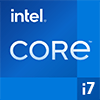
|
Intel Core i7-13850HX
20C 28T @ 5.30 GHz |
||
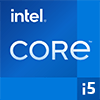
|
Intel Core i5-13500
14C 20T @ 4.80 GHz |
||

|
Apple M1 (7-GPU)
8C 8T @ 3.20 GHz |
||
Cinebench 2024 (Multi-Core)
The Multi-Core test of the Cinebench 2024 benchmark uses all cpu cores to render using the Redshift rendering engine, which is also used in Maxons Cinema 4D. The benchmark run is 10 minutes long to test whether the processor is limited by its heat generation.

|
AMD Ryzen 5 4600H
6C 12T @ 4.00 GHz |
||
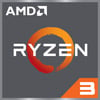
|
AMD Ryzen 3 8300G
4C 8T @ 4.90 GHz |
||

|
AMD Ryzen 3 PRO 8300G
4C 8T @ 4.90 GHz |
||
|
|
Apple M1
8C 8T @ 3.20 GHz |
||

|
Apple M1 (7-GPU)
8C 8T @ 3.20 GHz |
||
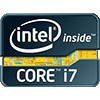
|
Intel Core i7-5960X
8C 16T @ 3.50 GHz |
||

|
AMD Ryzen 7 PRO 7730U
8C 16T @ 4.50 GHz |
||
Cinebench R23 (Single-Core)
Cinebench R23 is the successor of Cinebench R20 and is also based on the Cinema 4 Suite. Cinema 4 is a worldwide used software to create 3D forms. The single-core test only uses one CPU core, the amount of cores or hyperthreading ability doesn't count.

|
AMD Ryzen 5 PRO 5650G
6C 12T @ 4.40 GHz |
||

|
AMD Ryzen 5 PRO 5650GE
6C 12T @ 4.40 GHz |
||

|
Intel Core i7-1165G7
4C 8T @ 4.70 GHz |
||
|
|
Apple M1
8C 8T @ 3.20 GHz |
||

|
Apple M1 (7-GPU)
8C 8T @ 3.20 GHz |
||
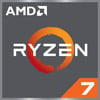
|
AMD Ryzen 7 6800H
8C 16T @ 4.70 GHz |
||

|
AMD Ryzen 7 PRO 6850H
8C 16T @ 4.70 GHz |
||
Cinebench R23 (Multi-Core)
Cinebench R23 is the successor of Cinebench R20 and is also based on the Cinema 4 Suite. Cinema 4 is a worldwide used software to create 3D forms. The multi-core test involves all CPU cores and taks a big advantage of hyperthreading.

|
Intel Core i7-8700
6C 12T @ 4.30 GHz |
||

|
Intel Core i5-1235U
10C 12T @ 2.50 GHz |
||

|
AMD Ryzen 5 5625U
6C 12T @ 3.40 GHz |
||
|
|
Apple M1
8C 8T @ 3.20 GHz |
||

|
Apple M1 (7-GPU)
8C 8T @ 3.20 GHz |
||

|
AMD Ryzen 5 2600
6C 12T @ 3.70 GHz |
||

|
Intel Core i7-1255U
10C 12T @ 2.70 GHz |
||
Geekbench 5, 64bit (Single-Core)
Geekbench 5 is a cross plattform benchmark that heavily uses the systems memory. A fast memory will push the result a lot. The single-core test only uses one CPU core, the amount of cores or hyperthreading ability doesn't count.

|
Apple A15 Bionic (4-GPU)
6C 6T @ 3.23 GHz |
||

|
Apple A15 Bionic (5-GPU)
6C 6T @ 3.23 GHz |
||

|
Intel Core i5-13500HX
14C 20T @ 4.70 GHz |
||
|
|
Apple M1
8C 8T @ 3.20 GHz |
||

|
Apple M1 (7-GPU)
8C 8T @ 3.20 GHz |
||
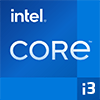
|
Intel Core i3-12300
4C 8T @ 4.40 GHz |
||
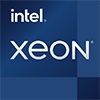
|
Intel Xeon W-1370
8C 16T @ 5.10 GHz |
||
Geekbench 5, 64bit (Multi-Core)
Geekbench 5 is a cross plattform benchmark that heavily uses the systems memory. A fast memory will push the result a lot. The multi-core test involves all CPU cores and taks a big advantage of hyperthreading.
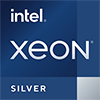
|
Intel Xeon Silver 4215R
8C 16T @ 3.80 GHz |
||
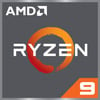
|
AMD Ryzen 9 5980HS
8C 16T @ 4.00 GHz |
||

|
Intel Core i7-6900K
8C 16T @ 3.20 GHz |
||
|
|
Apple M1
8C 8T @ 3.20 GHz |
||

|
Apple M1 (7-GPU)
8C 8T @ 3.20 GHz |
||
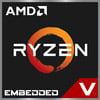
|
AMD Ryzen Embedded V2546
6C 12T @ 3.00 GHz |
||

|
AMD Ryzen 7 5700U
8C 16T @ 3.30 GHz |
||
Geekbench 6 (Single-Core)
Geekbench 6 is a benchmark for modern computers, notebooks and smartphones. What is new is an optimized utilization of newer CPU architectures, e.g. based on the big.LITTLE concept and combining CPU cores of different sizes. The single-core benchmark only evaluates the performance of the fastest CPU core, the number of CPU cores in a processor is irrelevant here.

|
Intel Core i5-13400
10C 16T @ 4.60 GHz |
||

|
Intel Core i5-13500
14C 20T @ 4.80 GHz |
||

|
Intel Xeon w9-3495X
56C 112T @ 4.80 GHz |
||
|
|
Apple M1
8C 8T @ 3.20 GHz |
||

|
Apple M1 (7-GPU)
8C 8T @ 3.20 GHz |
||

|
Intel Xeon E-2386G
6C 12T @ 5.10 GHz |
||

|
Intel Xeon w9-3475X
36C 72T @ 4.80 GHz |
||
Geekbench 6 (Multi-Core)
Geekbench 6 is a benchmark for modern computers, notebooks and smartphones. What is new is an optimized utilization of newer CPU architectures, e.g. based on the big.LITTLE concept and combining CPU cores of different sizes. The multi-core benchmark evaluates the performance of all of the processor's CPU cores. Virtual thread improvements such as AMD SMT or Intel's Hyper-Threading have a positive impact on the benchmark result.

|
Intel Core i7-10700K
8C 16T @ 4.90 GHz |
||

|
Intel Xeon W-11855M
6C 12T @ 3.80 GHz |
||
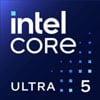
|
Intel Core Ultra 5 134U
12C 14T @ 0.70 GHz |
||
|
|
Apple M1
8C 8T @ 3.20 GHz |
||

|
Apple M1 (7-GPU)
8C 8T @ 3.20 GHz |
||

|
Intel Xeon W-1350P
6C 12T @ 4.70 GHz |
||

|
Intel Xeon W-2145
8C 16T @ 4.20 GHz |
||
iGPU - FP32 Performance (Single-precision GFLOPS)
The theoretical computing performance of the internal graphics unit of the processor with simple accuracy (32 bit) in GFLOPS. GFLOPS indicates how many billion floating point operations the iGPU can perform per second.

|
AMD Ryzen 5 7640HS
AMD Radeon 760M @ 2.60 GHz |
||

|
AMD Ryzen 5 7640U
AMD Radeon 760M @ 2.60 GHz |
||

|
AMD Ryzen 5 PRO 7640HS
AMD Radeon 760M @ 2.60 GHz |
||
|
|
Apple M1
Apple M1 (8 Core) @ 1.30 GHz |
||

|
Intel Core i7-8706G
AMD Radeon RX Vega M GL @ 1.01 GHz |
||

|
Intel Core i5-8305G
AMD Radeon RX Vega M GL @ 1.01 GHz |
||

|
Intel Core i7-8705G
AMD Radeon RX Vega M GL @ 1.01 GHz |
||
Blender 3.1 Benchmark
In the Blender Benchmark 3.1, the scenes "monster", "junkshop" and "classroom" are rendered and the time required by the system is measured. In our benchmark we test the CPU and not the graphics card. Blender 3.1 was presented as a standalone version in March 2022.

|
Intel Core i7-10850H
6C 12T @ 3.40 GHz |
||

|
Intel Core i7-8700
6C 12T @ 4.30 GHz |
||

|
Intel Core i7-8700B
6C 12T @ 3.20 GHz |
||
|
|
Apple M1
8C 8T @ 3.20 GHz |
||

|
Apple M1 (7-GPU)
8C 8T @ 3.20 GHz |
||

|
Intel Core i5-10500
6C 12T @ 4.20 GHz |
||

|
Intel Core i7-10750H
6C 12T @ 3.20 GHz |
||
Estimated results for PassMark CPU Mark
Some of the CPUs listed below have been benchmarked by CPU-monkey. However the majority of CPUs have not been tested and the results have been estimated by a CPU-monkey’s secret proprietary formula. As such they do not accurately reflect the actual Passmark CPU mark values and are not endorsed by PassMark Software Pty Ltd.

|
Intel Core i7-8086K
6C 12T @ 4.30 GHz |
||

|
Intel Core i7-6900K
8C 16T @ 3.20 GHz |
||

|
Intel Xeon W-1250P
6C 12T @ 4.60 GHz |
||
|
|
Apple M1
8C 8T @ 3.20 GHz |
||

|
Apple M1 (7-GPU)
8C 8T @ 3.20 GHz |
||

|
AMD Ryzen 5 4600HS
6C 12T @ 4.00 GHz |
||

|
Intel Core i5-10600KF
6C 12T @ 4.50 GHz |
||
Blender 2.81 (bmw27)
Blender is a free 3D graphics software for rendering (creating) 3D bodies, which can also be textured and animated in the software. The Blender benchmark creates predefined scenes and measures the time (s) required for the entire scene. The shorter the time required, the better. We selected bmw27 as the benchmark scene.

|
AMD A10-6800K
4C 4T @ 4.40 GHz |
||

|
AMD Ryzen 5 1600
6C 12T @ 3.40 GHz |
||

|
Intel Core i7-5930K
6C 12T @ 3.60 GHz |
||
|
|
Apple M1
8C 8T @ 3.20 GHz |
||

|
Apple M1 (7-GPU)
8C 8T @ 3.20 GHz |
||

|
Intel Core i5-9600KF
6C 6T @ 4.30 GHz |
||
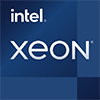
|
Intel Xeon E5-1650 v3
6C 12T @ 3.70 GHz |
||
CPU performance per watt (efficiency)
Efficiency of the processor under full load in the Cinebench R23 (multi-core) benchmark. The benchmark result is divided by the average energy required (CPU package power in watts). The higher the value, the more efficient the CPU is under full load.

|
AMD Ryzen 5 7640U
10,675 CB R23 MC @ 24 W |
||

|
AMD Ryzen 5 8640U
10,675 CB R23 MC @ 24 W |
||

|
AMD Ryzen 5 PRO 8640U
10,675 CB R23 MC @ 24 W |
||
|
|
Apple M1
7,759 CB R23 MC @ 18 W |
||

|
Apple M1 (7-GPU)
7,759 CB R23 MC @ 18 W |
||

|
Apple M2 (8-GPU)
8,558 CB R23 MC @ 20 W |
||

|
Apple M2
8,558 CB R23 MC @ 20 W |
||
Performance for Artificial Intelligence (AI) and Machine Learning (ML)
Processors with the support of artificial intelligence (AI) and machine learning (ML) can process many calculations, especially audio, image and video processing, much faster than classic processors. The performance is given in the number (trillions) of arithmetic operations per second (TOPS).
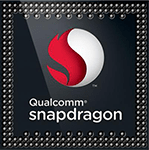
|
Qualcomm Snapdragon 778G
8C 8T @ 2.40 GHz |
||

|
Qualcomm Snapdragon 778G+
8C 8T @ 2.50 GHz |
||

|
Qualcomm Snapdragon 780G
8C 8T @ 2.40 GHz |
||
|
|
Apple M1
8C 8T @ 0.60 GHz |
||

|
Apple M1 (7-GPU)
8C 8T @ 0.60 GHz |
||

|
Apple M1 Pro (10-CPU 14-GPU)
10C 10T @ 0.60 GHz |
||

|
Apple M1 Max (24-GPU)
10C 10T @ 0.60 GHz |
||
Benchmarks

Cinebench 2024 (SC)
272 entries
272 entries

Cinebench 2024 (MC)
271 entries
271 entries

Cinebench R23 (SC)
586 entries
586 entries

Cinebench R23 (MC)
565 entries
565 entries

Geekbench 5 (SC)
2,488 entries
2,488 entries

Geekbench 5 (MC)
2,461 entries
2,461 entries

Geekbench 6 (SC)
1,755 entries
1,755 entries

Geekbench 6 (MC)
1,703 entries
1,703 entries

FP32 SP (iGPU)
2,042 entries
2,042 entries

Blender 3.1 Benchmark
212 entries
212 entries
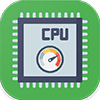
PassMark CPU-Mark
2,392 entries
2,392 entries

Blender 2.81 (bmw27)
190 entries
190 entries

V-Ray CPU-Render
249 entries
249 entries

CPU performance per watt (efficiency)
109 entries
109 entries

AI / ML Performance
119 entries
119 entries
News and articles for the Apple M1
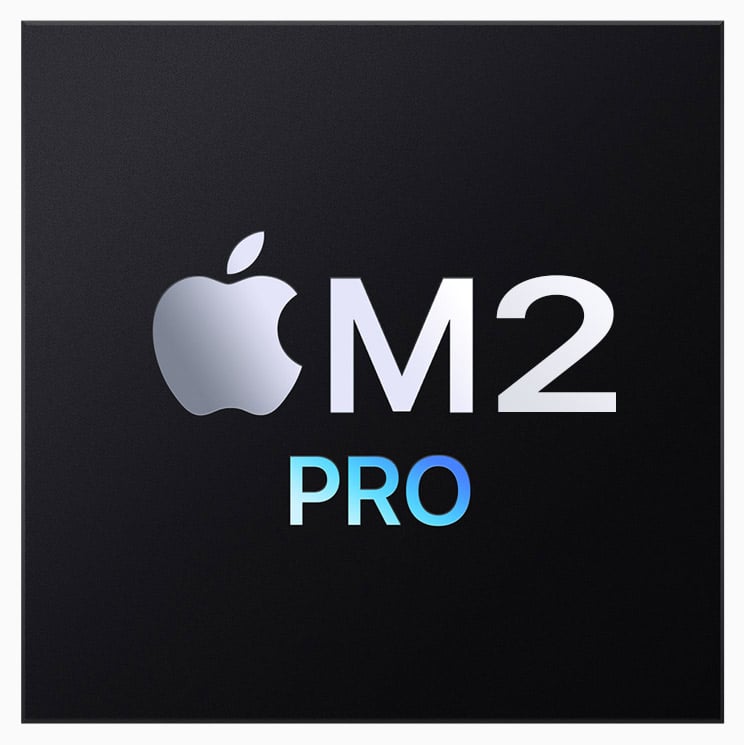
Apple M2 Pro with more CPU cores and production in 3 nm ?
Posted by Stefan on 2022-06-28
After Apple surprisingly presented the normal Apple M2 processor as the first successor to the Apple M1 already in June 2022, the Apple M2 Pro and the Apple M2 Max may follow in autumn. The difference in performance compared to the basic version could be even greater this time and range from 25 to 40 percent.
In this article we describe how Apple could realize this and why the price should also go up.
In this article we describe how Apple could realize this and why the price should also go up.
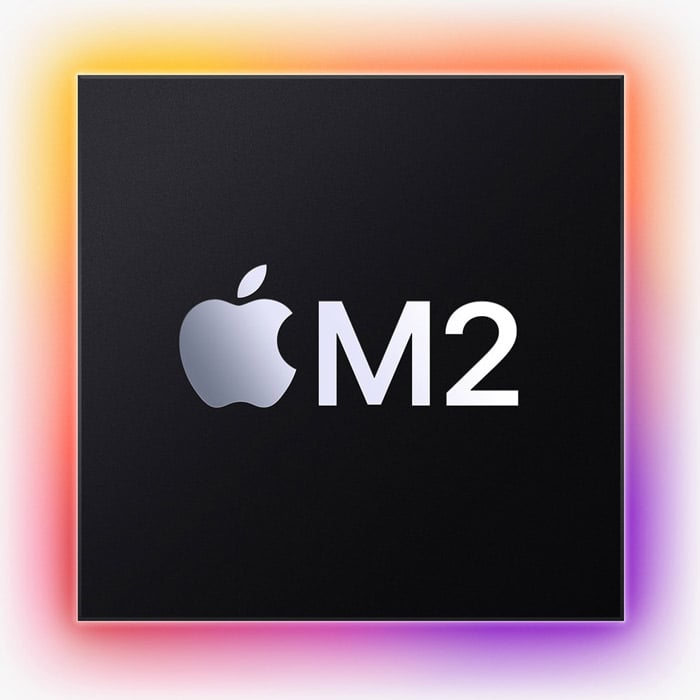
Apple M2 vs Apple M1 - What are the differences?
Posted by Stefan on 2022-06-09
During WWDC 2022 on June 6th, 2022 Apple surprisingly presented its new Apple M2 processor. This will initially be installed in a completely revised Apple MacBook Air with 13.6 inches, a even thinner form factor and new colors. Apple also updated the already known (old) Apple MacBook Pro 13.3 with touch bar.
Many leakers had counted on Apple not presenting its new second-generation M processor until the fall. But things turned out differently. And there is very likely a reason for that: the improvements in the Apple M2 are limited compared to the predecessor.
Many leakers had counted on Apple not presenting its new second-generation M processor until the fall. But things turned out differently. And there is very likely a reason for that: the improvements in the Apple M2 are limited compared to the predecessor.
Description of the processor
The Apple M1 is Apples first ARM chip for Macs. It is based on and is similar to Apples mobile A processors, but has four times more level 2 cache than the Apple A14 Bionic (16 MB to 4 MB in the Apple A14 Bionic). It combines 4 fast and large Firestorm cores with 4 efficient and smaller Icestorm cores. The core structure is built in the big.LITTLE design, which makes the chips very strong but also energy-saving at the same time.Like the Apple A14 Bionic, the Apple M1 is also manufactured in 5 nm at TSMC, making it the first series chip for mobile and desktop devices to be manufactured in 5 nm. The finer the manufacturing structure, the more energy-efficient the processors can be. The processor is operated at 3.2 GHz and can be used passively (without active ventilation) or actively with a fan. The TDP is 10 to 15 watts.
The Apple M1 comes with a very fast iGPU with 7 or 8 GPU cores. The 8-core variant of the iGPU achieves an FP32 raw performance of 2.6 TFLOPGS (2600 GFLOPS). In addition, the SoC is equipped with 16 AI / ML cores for machine calculations such as video or image processing. There is also an ISP for optimizing images and recordings via the notebooks webcam. The chip supports hardware-accelerated AES and can thus encrypt the data on the SSD built into the system quickly and efficiently.
Up to 16 GB LPDDR4X / LPDDR5 main memory is supported, which in the Apple M1 is integrated in a dense DRAM package directly in the SoC, which greatly increases the bandwidth and the associated data throughput. The iGPU, which also uses the main memory as graphics memory, benefits to a large extent from this. That is enough for the processor to currently secure first place in the Geekbench 5 - single core benchmark. But even in multi-core benchmarks, the 15 watt processor achieves scores that were previously only reserved for 45+ watt processors.
Popular comparisons
back to index



